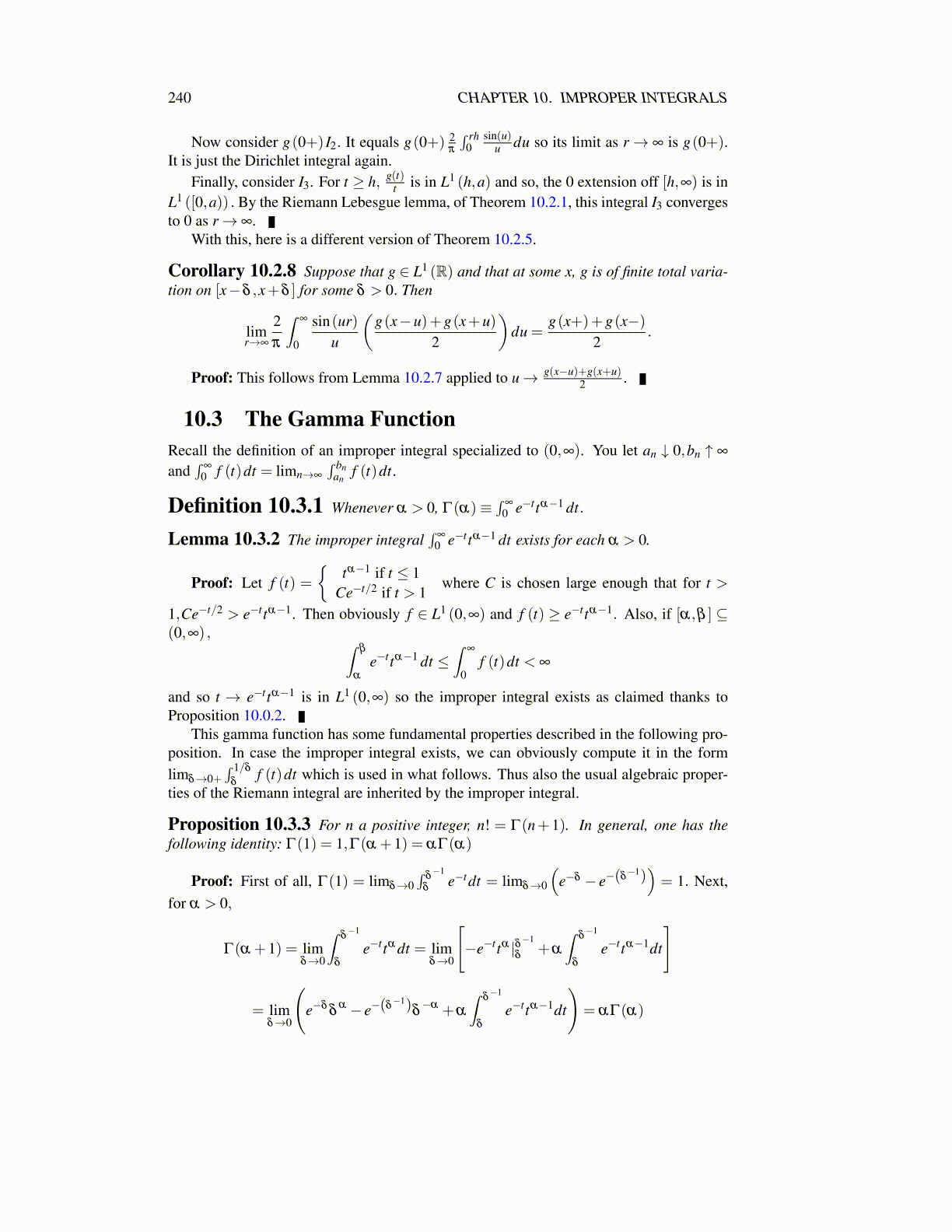
240 CHAPTER 10. IMPROPER INTEGRALS
Proposition 10.4.2 Let f have exponential growth and be continuous except for finitelymany points in [0,R] for each R. Then limR→∞
∫ R0 f (t)e−stdt ≡ L f (s) exists for every
s > λ where | f (t)| ≤ eλ t . That limit is denoted as∫
∞
0 f (t)e−stdt.
Proof: It is clear that f has exponential growth implies t → f (t)e−st is in L1 (R) andso the improper integral above exists.
Certain properties are obvious. For example,
1. If a,b scalars and if g, f have exponential growth, then for all s large enough,
L (a f +bg)(s) = aL ( f )(s)+bL (g)(s)
2. If f ′ (t) exists and has exponential growth, and so does f (t) then for s large enough,
L(
f ′)(s) =− f (0)+ sL ( f )(s)
One can also compute Laplace transforms of many standard functions without muchdifficulty. One of the most important properties of the Laplace transform is the convolution.
Definition 10.4.3 Let f ,g have exponential growth and be continuous except forfinitely many points in each [0,R]. Then f ∗g(t)≡
∫ t0 f (t−u)g(u)du.
Observation 10.4.4 f ∗ g = g ∗ f . This merely involves changing the variable. Letv = t−u.
The following proposition will involve an assumption that the functions are continuous.This is not necessary but I have not developed the necessary machinery for Fubini’s theoremto do this in full generality and an ad hoc approach sufficient to include discontinuousfunctions would be tedious. Therefore, here is an easy lemma.
Lemma 10.4.5 Let f ,g be continuous on [0,R]. Then∫ R
0
∫ t
0f (t−u)g(u)dudt =
∫ R
0
∫ R
uf (t−u)g(u)dtdu (10.10)
Proof: First note the following. For F (t)≡∫ t
0 f (u)du and G(t) defined similarly,∫ R
0
∫ t
0f (t)g(u)dudt =
∫ R
0f (t)
∫ t
0g(u)dudt =
F (t)∫ t
0g(u)du|R0 −
∫ R
0F (t)g(t)dt = F (R)G(R)−
∫ R
0F (t)g(t)dt
∫ R
0
∫ R
uf (t)g(u)dtdu =
∫ R
0g(u)
∫ R
uf (t)dtdu =
∫ R
0g(u)(F (R)−F (u))du
= G(R)F (R)−∫ R
0F (u)g(u)du
If f is a polynomial, then f (t−u)g(u) is a sum of terms of the form f̂ (t) ĝ(u) and so 10.10holds. Now by Weierstrass approximation theorem, there is a sequence of polynomials { fn}which converges uniformly to f on [0,R] . Hence, since 10.10 holds for each fn replacingf it continues to hold in the limit.